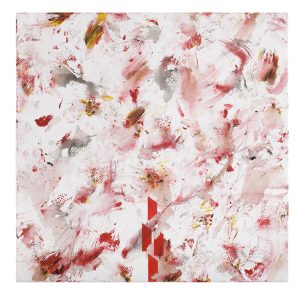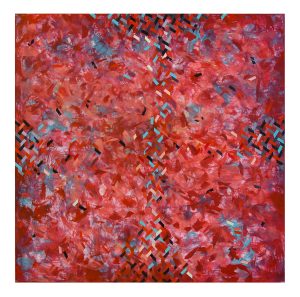
Éva PARAGI
Amber
- Year(s)
- 2019
- Technique
- acrylic, oil, canvas
- Size
- 100x70 cm
Artist's introduction
Éva Paragi is a representative of the Pécs-based geometric painter tradition, who entered the scene at the turn of the millennium. The geometric motifs of her abstract paintings in delicate colours question the minimalist limits of the narrative potential of the image. Born in Budapest, Éva Paragi graduated from the Faculty of Art at the University of Pécs in the second half of the nineties, under the wings of the legendary master of abstraction in Pécs, Ferenc Lantos. Her painting is defined by a dual continuation of the great 20th century modernist tradition of geometric abstraction and the legacy of the colourist painting movement in Pécs. After her early tableau paintings of applied slats and geometric structures, it was in the mid-2010s that she found her main motif, the wooden wedges. She explained the dual nature of this important but invisible studio tool as follows: "The element found, the wooden wedges that frame the canvas, is a rectangle in one direction and a tiny object ending in a point in the other. It has a dual nature. It stretches the frame to help the canvas stay flat. It stretches, it distances to bring things closer and hold them tighter. It is made of wood, a natural object with irregular veins, intersected by straight lines to form a geometric shape. Irregular and regular at the same time." Paragi uses the wedge shapes to create playfully geometric constructions, such as a woven wire fence or a barbed wire star motif. At other times, she has them float freely in a rippling abstract field of gestures, or even collects them in a porcelain bowl in their real, three-dimensional form. Through combinatorial operations that play with the motif, she explores the hidden mechanisms of the transformation of visual element into an image. Paragi lives and works in Szeged. Although she has participated in several exhibitions abroad, her exhibitions are mostly related to Szeged and Pécs. Gábor Rieder
More artworks in the artist's collection »














